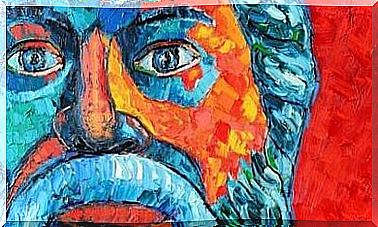The Characteristics Of Co-addiction

Co-addiction is a very complex behavior that has a major impact on both the person who develops it and those close to them. It can have a major impact on someone’s daily life and make them unable to cope with any difficulties.
That’s why it’s important to know what it is and how it can affect you. Not only to prevent you from getting it, but also to discover if someone close to you might be suffering from it.
Defining co-addiction
Co-addiction is a dependent relationship in which at least one of the members is addicted to a particular substance. The disagreement caused by the addiction leads to a change in the person’s behavior. This creates a new way of functioning.
A number of studies have shown that women are more likely to experience it, especially women who are mothers and/or wives. You could explain this by their cultural development in society. In this case, women often take on the role of caregiver, almost to the point of forgetting themselves to try to meet the needs of their loved ones.
This term comes from families of people who participated in Alcoholics Anonymous. During the different sessions they discovered very special physical, emotional and psychological conditions in these families.
People in this situation tend to develop a number of difficulties in expressing emotions and in resolving personal and interpersonal conflicts.
They devote their efforts to controlling the addict’s addictive behavior to the point of experiencing it all. This creates a dynamic in which the addict controls the life of the fellow addict through his manipulative behavior.

The two types of co-addiction
There are two types of co-addiction. Each has its own characteristics and consequences.
codependency
The first type is codependency. In this case, the person has a dependent or interdependent and unhealthy bond with an addict. It is important to emphasize that in this type of co-addiction, the person in question is not addicted to a substance.
This situation arises from the stress of life and dealing with an addict. Therefore, this phenomenon increases and intensifies over time. Here are some of the characteristics of codependency:
- A constant investment of their time trying to develop skills to control both themselves and others, especially when adverse situations arise.
- Prioritizing the addict’s knowledge and responsibilities to the point of ignoring their own.
- Distortion and fear of the boundaries between separation and fear.
- Bypassing their personal space and their own needs.
- The tendency to get involved in relationships with impulsive people with personality disorders or drug addictions.
Bio-dependency
The second type of co-addiction is bio-dependence. You can define this construction as a dependency dependency. In other words, a relational dependency implanted in someone who is addicted.
In this case, there is a set of attitudes, effects and behaviors that, apart from the specific addiction, create dependence on people or situations of a sociopathic nature. This significantly determines the day-to-day activities of the two people who are in an addictive co-addicted relationship.
Therefore, the bio-dependent person adopts a passive attitude. They also intentionally lose or noticeably reduce their autonomy.
As a result, they do not make any decisions and become disabled, as it were. You could say that the relationship they have with the person they depend on is similar to the relationship they have with the substance they are addicted to.
However, it is important to specify that this lack of autonomy cannot last when they take actions to maintain an addiction.
Therefore, the addict is able to create and perform actions to find, acquire, and buy what they so desperately need. Here are some of the clinical features of bio-dependent humans:
- Lack of awareness of the problem.
- Delegation of decision-making and a remarkable reduction in autonomy.
- A demand for sensations with the partner similar to those sought in the addictive substance.
- The obsessive search for a partner, emphasizing that it is the relationship that stimulates bio-dependence.
Why does co-addiction occur?
To begin with, it is important to emphasize that co-addiction occurs when one of the family members is addicted to some substance. When this disorder develops, it is easy for people in the environment to eventually engage in behaviors that serve to reinforce their own addiction.
However, this perverse adaptation results in a series of relational dynamics that are not healthy. In the case of the fellow addict, they begin to take on responsibilities that are not their own when they become aware of the presence of significant problems resulting from the addiction. They try to minimize the damage.
In other words, they start doing certain things and thus take over the role of the addict. In some cases, they help the addict let himself down even more.
As a result, the person begins to experience anxiety and stress. Feelings of shame also arise due to the attitude of the addict and their own.
In addition, there is the fear of not knowing if they are doing the right thing or of the helplessness of not being able to fulfill everything. Finally, feelings of guilt arise because the co-addicts believe they are maintaining the addiction through their attitudes.

Conclusion
Addiction does not only affect the addict himself. The ill effects of dependence go much further. For example, the data show that the greater the addiction, the greater the chance that a secondary addiction will develop in the addict’s immediate environment.
The impact and consequences can be much greater when this limit is reached. Almost to the point that they are one of the things that amplify the addiction.
Therefore, in these cases, the support that has the most desired effect is the support that is given within a psychological intervention, where the expert is always present to advise and direct.









